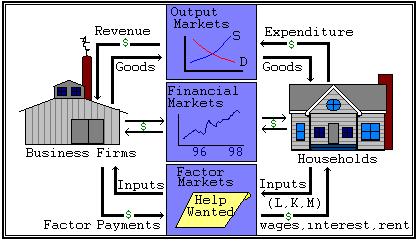
Economics is a social science concerned with the study of how a given society allocates scarce resources to meet the unlimited wants and needs of its members.This study is about decision-making, alternatives and choices by individuals, business-firms, as well as governments that represent group preferences.
The moment we focus on individual behavior, we place our study in the realm of Microeconomic analysis and it can be argued that all economics follows the microeconomic branch. Microeconomics provides the analytical tools to help us understand the how and why individuals make the decisions that they make, how business firms can shephard resources and materials to efficiently produce desired goods and services. In a market-based economy, Microeconomics and also be referred to as Price Theory -- the study of how prices act as signals and the decisions that individuals (and business firms) make in reaction to these signals.
But these price signals can get distorted and markets can fail. Microeconomic analysis can provide guidance about how to create policy responses to these failures, provide the correct incentives for market participation, and promote efficiency in the product and distribution of goods and services.
Basics
1. Economics as a Social ScienceConsumer Theory (Demand)
11. Consumer Preferences and Indifference CurvesTheory of the Firm (Supply)
17. Production and Production PossibilitiesMarkets, Exchange and the Competitive Spectrum
24. Specialization and TradeFactor Input Markets
31. Labor Markets 32. Savings and the Supply of Funds 33. Investment Decisions and the Demand for Funds Practice: Factor Input Markets
The Circular Flow diagram represents the relationship between the primary economic agents in market-based economies. These agents (business firms / producers) and (households / consumers) interact via three types of markets: output markets, financial markets, and input markets.
The inner ring of arrows represents the flow of goods and services from producer to consumer and the flow of factor inputs between households and business firms. The outer ring represents the flow of expenditure and payments -- the expenditure made by consumers becomes the sales revenue of business firms. The payment for factor services (land, labor, capital, and entrepreneurship) represent costs for the business firms and income (in the form of rents, wages, interest, and profits) to households.
The arrows via financial markets represent the flow of savings (loanable funds) typically from households to businesses (to facilitate the capital expenditure needs of the latter) and the flow of interest payments from borrower to lender.